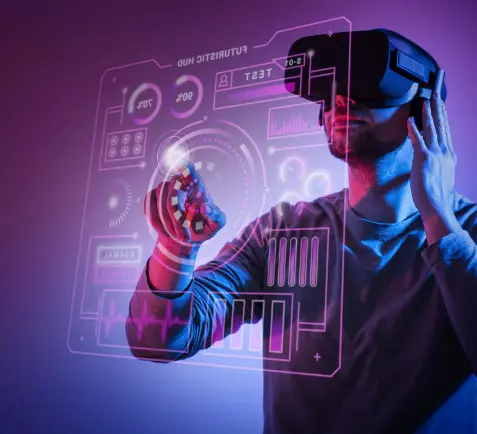Insurance consumers around the globe are seeking convenience and expecting better customer experience. From millennials to Gen Z, with the agile connectivity, irrespective of the industry has numerous options to choose from. As the competition intensifies the insurance industry has to jump into the bandwagon of technovation in order to provide improved accuracy, cost-saving and excellent customer experience.
Here is a list of the marketing trends in insurance that will prove to be a game-changer in the year 2020.
1. Robo Financial Advisors
According to a Business Insider Intelligence forecast, by the year 2020 Robo-advisers will manage investment products worth $1 trillion, which will spike up to $4.6 trillion by as early as 2022.
Robo advisors have been around for quite some time. In the year 2008, during the financial crisis, Jon Stein, a 30-year old entrepreneur launched “Betterment”, the first Robo-advisor. In recent years due to its low investment rates and data input based research results, it has increased in popularity.
It is basically designed for the people who want to manage their finances with low management cost. Based on respective data inputs, the Robo-advisors offer any advisory services.
The main purpose behind the making of the Robo-advisor is to bring the financial services to the wide range of population with lower investment cost as compared to the traditional human advisors. Upwardly.com, 5Paisa.com and Goalwise.com are some applications of Robo-advisors.
Behind the scenes of the software of Robo-advisors are actual human beings who track the market regularly and adjust the algorithms based on the current market condition. Robo-advisors are a boon to the end-users as they can invest in direct plans of mutual funds without shelling any commission. However lack of personalization and one-size-fits-all products are the areas of improvement.
2. Data Integration: The Future of Marketing
IDC estimates that, by the year 2020, the digital cosmos will reach 44 zettabytes, further complicating the lives of marketing professionals.
Integrating data sources is vital for any company, whether B2B or B2C to successfully meet Customer Experience expectations thereby drive accelerated sales revenue.
With an integrated source of information, retailers can administer and optimise marketing through KPI’s, metrics and dimensions that would not have been possible with the separate source system. In order to upscale marketing operations, a connected viewpoint is essential to evaluate the campaigns, audiences, events and channels, and drive the strategic goals.
From an operational viewpoint, CRM solution provides the organization with new business and the ERP system allows to manage and drive businesses around obstacles. A good place to start with the data integration is by Integrating these two systems shall provide marketers and the organizational sales-force with vital information, that can be shared with the stakeholders.
3. AI-driven Copywriting
Artificial intelligence can create cancer combating drugs, control self-driving cars, defeat the best brains at incredibly complex board games, but one realm it can’t perform flawlessly is communicating.
To help solve the issue, Google has been feeding it’s AI with more than 11,000 unpublished books, including 3,000 steamy romance titles.
Autoencoder, a type of AI network, uses a data set to reproduce a result (in this case copywriting) using fewer steps. Insurers can harness this AI capability to create sentences and suggest the best-optimised language to approach the customers.
AI copywriting is evolving to a whole new level. Google granted €706,000 (£621,000) to the Press Association, to run a news service with computers writing localised news stories. AI with the help of human journalists can write up to 30000 news stories a month and scale up the volume of the stories that would otherwise be impossible to produce manually.
“Skilled human journalists will still be vital in the process, but Radar allows us to harness artificial intelligence to scale up to a volume of local stories that would be impossible to provide manually. It is a fantastic step forward for PA.”
- PA’s editor-in-chief, Peter Clifton
4. Gamification of Insurance
At the nexus of marketing trends ranging from social networking to the IoT to behavioural science and wearable tech; gamification is a powerful lever for insurers and insurance agents. It creates an enriching digital experience and customer-centric business model.
Gamification offers great potential value to the insurance business process in the realm of consumer engagement and customer experience. From millennials to Gen Z, it has emerged as a useful practice and effective means to target early technology adopters by:
- Transforming mundane tasks into interesting and fun experiences that keep users returning.
- Increases brand awareness, brand penetration and affinity.
- Increase sales by educating customers about product suitability and guide them to buying the product.
- Motivating people to act in areas of healthcare and wellness, safe driving, financial planning and sustainability.
Ingress and AXA redefined the world of gaming and advertisement. December 5th, 2014, Niantic Labs the creator of ‘Ingress’ partnered with AXA. In the game, AXA Shield was initially only obtainable from AXA Portals, leading you to AXA business locations in person.
5. Advanced AI Capabilities in Insurance
Innovation and technology are the next frontiers in the insurance industry. While automation and IoT are already a reality for insurance, with the advent of AI there has been a holistic approach to Insurance automation. With insurance leveraging AI, it has expanded its reach to more ecosystems than ever before. Deploying AI capabilities in insurance can help make smarter underwriting decisions, fraud detections, risk assessment and create a better customer experience.
AI is driving significant change in business with insurance being no exception. It has the potential to enhance the insurance business model by-
- Improving the speed of the workflow: AI and RPA in insurance reduce redundancy of task. Automation of day to day tasks would reduce cost and time consumption thereby increasing accuracy, quality and competency.
- Customizing the services for better customer experience: One size no longer fits all, and the same goes for the insurance industry. With focus on individual markets, insurers can create niche usage-based products to sell the packages in a variety of ways.
Parag Sharma, CEO, Manta Labs and AI thought leader is going to speak about the Internet of Intelligent Experiences™: CX for the Digital Insurer at India Insurance Summit and Awards 2020 on March 12, 2020. Catch him live at IISA 2020.
- Providing new insights: Insurance is no guessing game. Data in silos is the biggest drawback for any industry. AI in insurance can integrate this data and provide analytics to help actuaries have a better insight while making a decision about a product.
Marketing Trends in Insurance: The Bottom Line
Today, at the core of marketing in Insurance, lies AI, Machine Learning and advanced data analytics to foster better experiences for the end-user. We’ve listed 5 most important trends that have the potential to shape marketing business models for Insurance and InsurTech firms. Be it Robo financial advisors or gamification, impressing customers remains the prime goal for Insurers.
Have thoughts and queries regarding upcoming marketing trends in Insurance? Please feel free to drop us a word at hello@mantralabsglobal.com.
Knowledge thats worth delivered in your inbox





